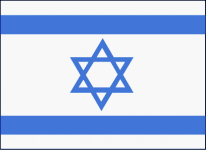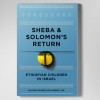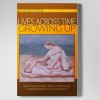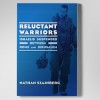May 1 2006: Yom Ha Zikaron/Atzma’ut
For me, Independence Day is the most important Jewish Holiday: holier than Yom Kippur, with only less food and ceremony than Pesach. I could not miss this.

“Where is he wounded?
You don’t know if the aim is a place on his body
or a place on this Land.
A bullet sometimes passes through
the man’s body and wounds
his Land’s earth.”
—- Yehuda Amichai
A Jewish way to “celebrate” Independence: start with a day of mourning. Jewish holidays start with darkness, start the night before, to remind us that “in the beginning was darkness and waste.” But Independence Day here in Ha–Aretz, “the Land,” starts with a double darkness: the darkness of the night before, and the darker entire night and day before to remember all those fallen since the State’s founding.
I was encouraged, or perhaps warned unintentionally, not to miss the Yom Ha Zikaron (Day of Memory) ceremony in Ra’anana. Tel Aviv’s is more impressive perhaps: in Rabin Square every major singer, artist, alights the stage, sings one song and leaves. There is respect for the day: no protest speeches, no signs waving. But, little Ra’anana a town of some 60, 000, fills its Yad Le Banim square (Hand/Memory of the Sons’) with some 15, 000. On television, starting at 8 p.m. and for the next twenty-four hours precisely, runs the name of every person killed in the State.
I was still in the U.S. I had been asked to stay a few days longer to work as an expert witness for the Court. I said, “Impossible.” I did not say, “I won’t miss my first Independence Day, as I had missed my first elections.” I just said, impossible, and the Court backed down, worked out a schedule so that I could finish work late last week.
For me, Independence Day is the most important Jewish Holiday: holier than Yom Kippur, with only less food and ceremony than Pesach. I could not miss this.
I had not understand the weight of the preceding Yom Ha Zikaron.
Precise was the timing. A very unJewish precision. The ceremony starts precisely at eight. I, a bit stunned with jet lag, get phone calls from my neighbor Michelle, most of which I do not hear, until I call and she says that her husband, Ira, is also returning from the States, will take Ben and Avital, two of their teen children, to the ceremony; Michelle is staying home with eight-year old Mayan. Their eldest, Ben, will be recognizing the ceremony with his army unit. Thoughtless as I am, I bring my laptop, figuring that I will arrive a few minutes early, work in the wireless cafe Ilan across the street, then join.
Streets are blocked off. The main street is blocked for some distance. The Kfar Saba fire engine parked across the square. Police direct traffic; soldiers abound, many seen only in shadows. Ira phones me as I am approaching, around 745, to say that they have saved a seat for me on the side, near the stage, but obscured by a video screen. He comments that the previous mayor left much of the seats facing the stage open for the public; reserved only a few for the elite; this mayor seems to have more people demanding reserve seating, so we are relegated to the wings. Wings are enough for me, as I tears press my cheeks through much of the ceremony.
The cafe is dark. All cafes, restaurants are closed. It is like Yom Kippur here in Ra’anana: main street empty of traffic, filled with people; stores dark, blinkered.
And at eight, precisely at eight, all stand, air raid sirens begin simultaneously. They halt serially, as if distant echoes of each other. I sit between Ben — who has just received notice that he is being recruited for the air force, whose brother is in Nachshon — and bleary-eyed Ira. I think during this ceremony, how, when Ira arrived to Israel, on his first Yom Ha Zikaron, a boy from Ra’anana is killed — Daniel G…, a name too close to his eldest son’s. I think during the ceremony of how war reverses the natural course of mankind: instead of sons and daughters burying parents, the opposite occurs. I can’t recollect if this is Heroditus who made this observation. I don’t know if I should congratulate Ben on his news, or admonish him never to be listed in this ceremony. I want to tell Ira that Daniel should always return home safely. I think how this country is guarded by such very young and prematurely aged soldiers
.
Just before the ceremony, I am distracted by looming, fleeting shadow giants. The facade of Yad Le Banim is illuminated brightly. There is a mezzanine roof backed by an arch leading to a domed roof. On the face of the arch, I see these Refa’m, “Giant Ghosts,” fleet by. I think that they are soldiers on the roof, scouring for danger. Later I see that the edge of the parapet is lined with candles. As each soldier’s, each terrorist victim’s name is read, someone above lights a candle of remembrance. In my youth, my parents lit too many of such Yahrzeit (Year time) candles. In my youth, these were all lit the same day of the year, as the Nazis didn’t notify my parents of the dates of their siblings and parents murders .
Here, we know.
Each name is read and flashed on the screen, date of birth, parents’ names,some with a nickname. Most have photos; not all in the early years. The photos are so varied. Some nineteen year olds look much older; some in uniform, some in that European crouch, with one knee extended, hair swept back from a touch of a widow’s peak. The Sephardi dead are recognized not only by names, but also by these remarkable dark eyes. Some died before they could exchange their Galut name –Jacques, Franz — for an Israeli moniker. An occasional photo was a candid, with a broad smile; most are in uniform. The women I wonder about: how did an eighteen year old girl die in the Jordan Valley? Then, there are the few men in their forties and fifties. Fifty is the age of retirement from reserve duty; how did this fifty-one year old die? Many of these names are familiar to Ira, he tells me later: that is Stuart W.’s son; this should be the mayor’s brother; later we hear from a young man about his older brother’s death in 1990, then see the boy’s face. Interspersed, for the sake of breaks, are songs, recitations, movies of former battles. The early movies are black and white; towards the end we see color and the Merkava, Israel’s own tank, built to protect its men better than the British and American armor. A scene near the Old City in ’67as men dash, then slide into a stone wall on a roof top, smashing their bodies into Jerusalem stone, before peering above the roof line to fire.
The young man, perhaps now in his late twenties, speaks of his brother’s death sixteen years ago. I struggle to understand the Hebrew of all he says. He begins with last Passover; how the questions of the youngest child, the Mah Nishtanah (How is this night different than all other nights?) begins the entire Seder story. How is this night different? You, my brother are still not here. He recalls brotherhood — the pranks done, the games played, the arguments over who will stay up latest. He says how the love by brother of brother is a different kind of love, different even than the love of father or mother for child. He is even toned; only his words are powerful. He folds his words, places them next to his heart and leaves the stage; leaves us with feelings. Another series of dead are seen; more candles flicker.
Too many candles line the roof; dimly light this too-dark night.
Even during the ceremony, we are interrupted by ambulance sirens. Ira says that this is the first ceremony during which he has heard so many sirens. Even as we remember the dead, we are reminded of more who are dying, can die. We finish with Hatikva, the Hope. I still find tears welling in my throat as I sing and listen to two thousand years we have looked towards Zion and hoped. Now we have a Land, we have achieved our hopes, but still hope (unrealistically) that no more names and photos will be added to this overlong, this ever-too-long list.
Copyright N. Szajnberg, MD 2006



